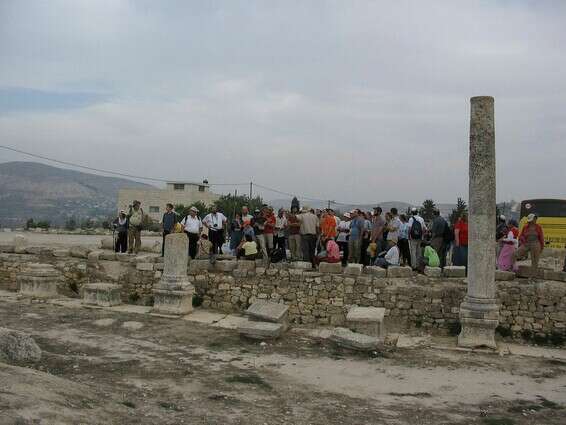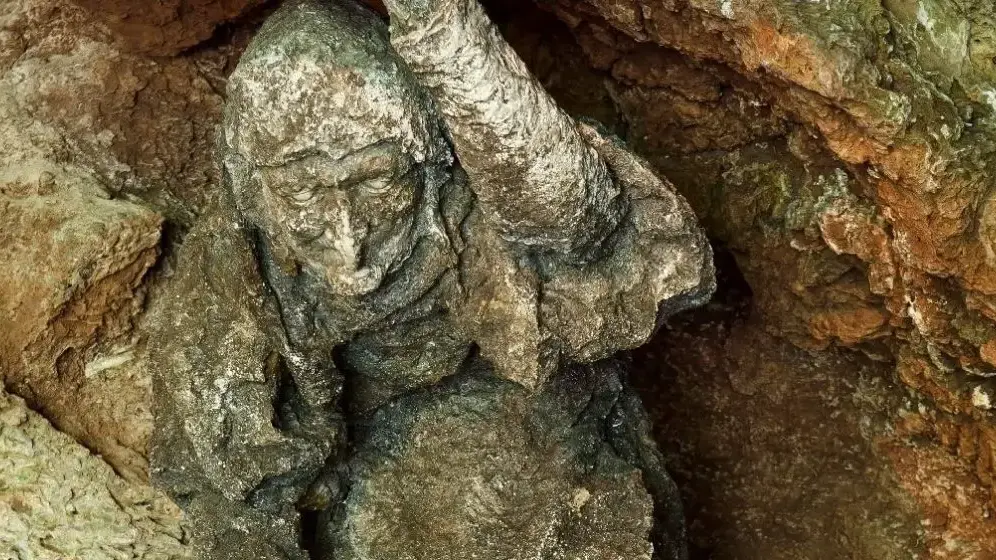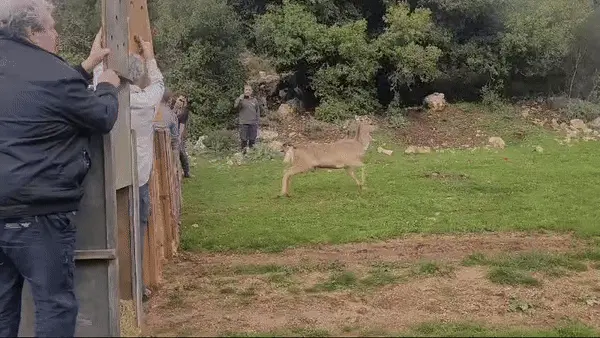For more than a century, researchers have been wondering who wrote addresses found in the Old City of Samaria • Algorithm developed at Tel Aviv University revealed - it is only two people
Ostracons (ink stories on pottery fragments) from Samaria, capital of Israel, after adding color // Photo: The Semitic Museum, Harvard University
An innovative algorithm developed by archaeologists, mathematicians and physicists at Tel Aviv University revealed that dozens of inscriptions from the city of Samaria, the capital of the ancient kingdom of Israel, were written by only two people. Apparently these were the writers or officials of King Jeroboam son of Joash, mentioned in the Book of Angels II. The university notes that the finding has great significance for understanding the administration of the prosperous kingdom.
Four researchers - Prof. Eli Turkle, Dr. Aryeh Schaus, Dr. Barak Sober and Shira Feigenbaum-Golubin, all from the Department of Applied Mathematics, have developed an innovative method for determining the number of writers in ancient collections of inscriptions discovered in excavations. Led by Prof. Israel Finkelstein of the Department of Archeology and Early Eastern Cultures, and Prof. Eli Pistecki of the School of Physics, they implemented the algorithm that developed dozens of short administrative addresses unearthed in Samaria and found to have been written by only two people. "According to the findings, we assume that all inscriptions were written by two people, presumably writers or officials of King Jeroboam Ben Joash who reigned in the first half of the 8th century BC," explains Prof. Finkelstein.
These are Samaritan inscriptions, which were found in the early 20th century in excavations in the ancient city. "Those in clay fragments with an inkjet (ostracons) used for administrative drawings," adds Professor Finkelstein. "Each of them has a short inscription in ancient Hebrew: the king's year, the merchandise - wine or oil, the geographical location from which the goods came, and sometimes the shipper's name. These are probably records from a period of 7 years in the time of the important king Jeroboam II. The goods were sent from the tribe of Menashe in the heart of the kingdom, around the capital, and some of the names that appear in the inscriptions are also mentioned in the Bible. "
"For many years, scholars have wondered whether the inscriptions were written by representatives of the king who sat in those areas outside the capital, or by the king's officials in the capital itself upon arrival of the goods - which could help understand the administration of the kingdom, and also the circulation of literacy at that time," he says. . Therefore, the researchers focused the question and examined the number of authors of these addresses.
To answer, researchers used an algorithm for analyzing manuscripts that they had developed in a previous study of inscriptions found in Arad - a remote military post of the Kingdom of Judah from around 600 BC.
Travelers in Sebastia (Old City of Samaria) // Photo: Tourism Samaria
"The method is based on comparing and separating pairs of manuscripts in all possible combinations, and determining if they were written by different people," says Shira Feigenbaum-Golubin. "In the Algorithm, the algorithm showed that 16 addresses were written by at least 4 people. When we applied the algorithm to 31 of the Samaritan ostriches we found that it was at least 2 writers. This finding is important, but this time it did not satisfy us. Writers, or in statistical terms - the most likely number of writers. For that, we needed further development. "
In the new work, the researchers conducted a statistical review of possible algorithm errors, which may be due to the fact that Samaritan addresses are short and contain few letters. "We conducted simulations to estimate possible errors - with short sections taken from Arad addresses, which we already know," explains Dr. Barak Sober. "For example, we applied the algorithm to pairs of short sections taken from the same address in Arad, so we knew in advance that they were written by That person. We found that the algorithm was hardly wrong, and we concluded that it was accurate in analyzing Samaria addresses. Conclusion: The number of writers in Samaria was exactly two - 95 percent certainty. "
.
"Despite many attempts, we did not find any textual attributes that could be attributed to any of the writers," Dr. Aryeh Schaus adds. In other words, it can be hypothesized that the two writers or officials acted in parallel, perhaps on shifts, and backed each other up. "
Sebastia (Old City of Samaria) // Photo: Tourism Samaria
"In our research, we were able to develop a new and important tool for exploring ancient texts," concludes Prof. Pistecki. "Researchers in this field, called paleography, now rely on the form of letters, material and ink, content, etc. From now on, with our method, they can also determine the number of writers. In the case of Samaritan addresses, the finding helps us to better understand the administration practices in the kingdom. Another possible conclusion is that knowledge of writing was not yet very common in Israel at this time - the first half of the 8th century BC, and was concentrated mainly around the King's Palace. It is conceivable that this ability has also enabled the writing of literary texts, the kind of prophetic writings of Hosea and Amos, who lived and worked in the Kingdom of Israel. "
The article was published tonight in the journal PLOS ONE















